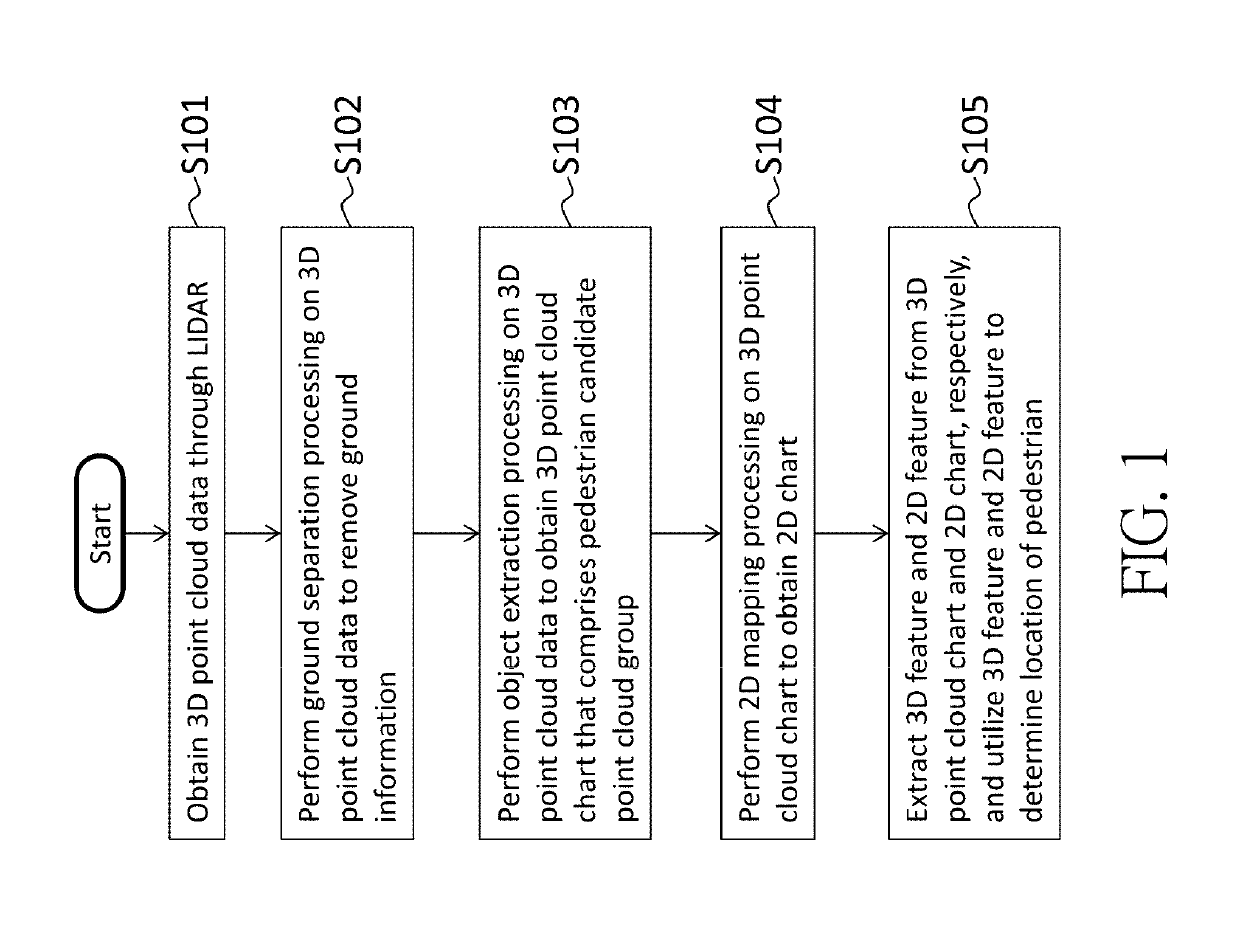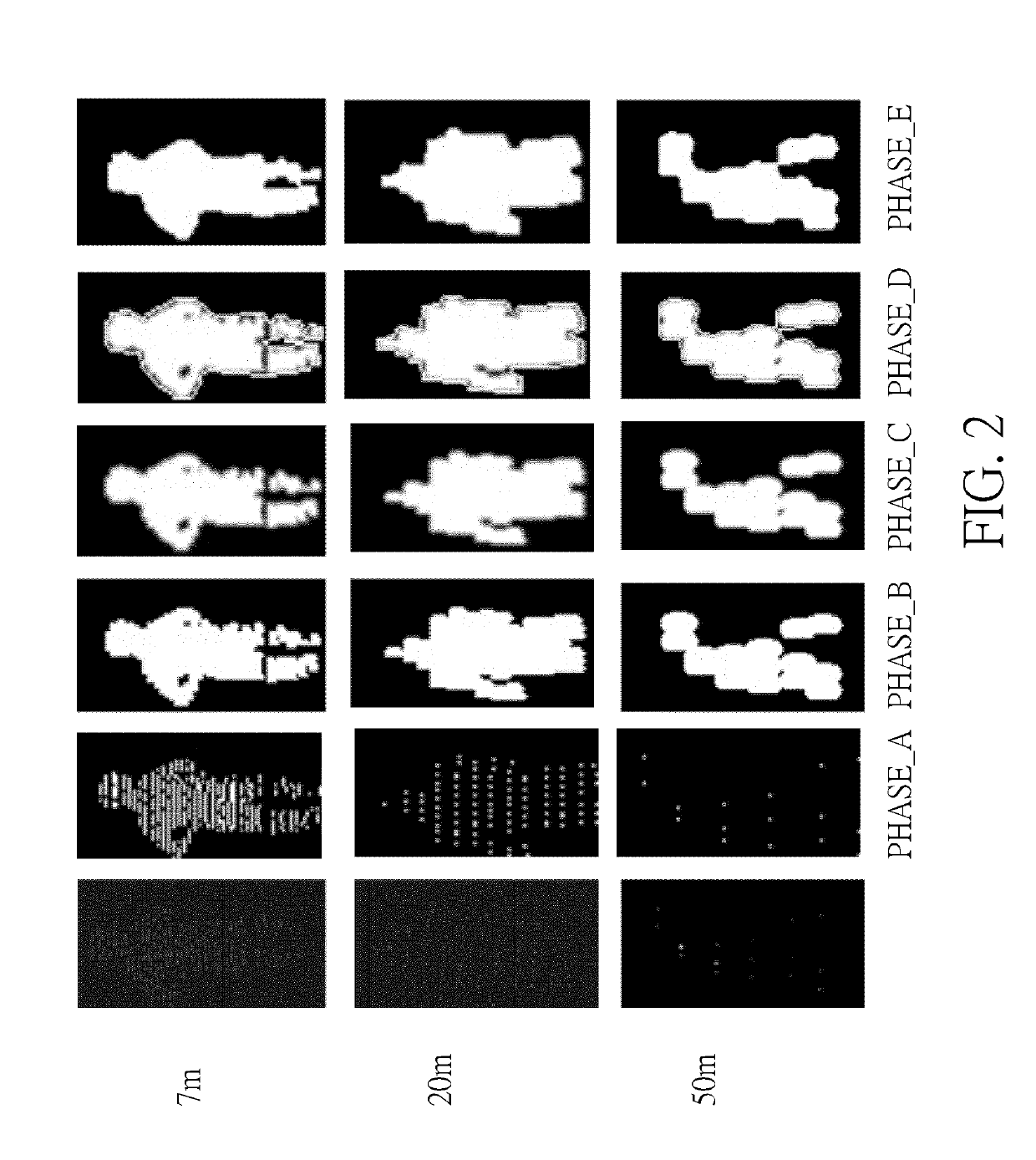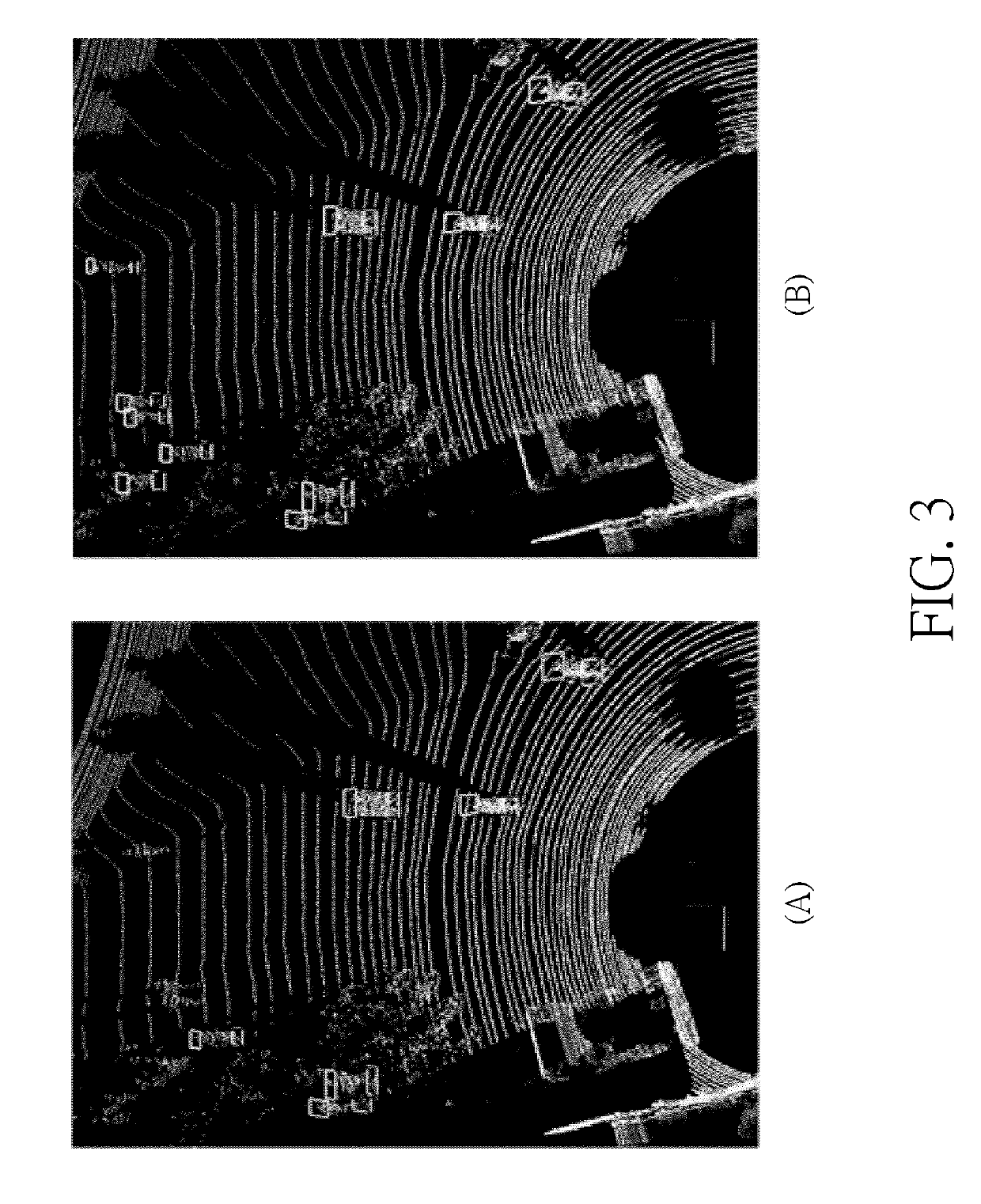Method for performing pedestrian detection with aid of light detection and ranging
a technology of light detection and pedestrian detection, applied in the field of image processing, can solve the problems of difficult detection of pedestrian locations, large power consumption, high cost of infrared detection systems, etc., and achieve the effect of improving the image of pedestrians
- Summary
- Abstract
- Description
- Claims
- Application Information
AI Technical Summary
Benefits of technology
Problems solved by technology
Method used
Image
Examples
Embodiment Construction
[0018]Embodiments are provided to describe the method of the present invention, and those skilled in related art may readily understand advantages and effect of the present invention according to detailed descriptions provided as follows.
[0019]Laser beams emitted by the light detection and ranging (LIDAR) system may have high directivity without considering the influence of light environment. Emitting laser beams with high precision to scan obvious features around street environment can be helpful for detecting an object (e.g., a pedestrian) which is smaller than an automobile, and the above are widely discussed in current developments of self-driving technology.
[0020]The present invention utilizes a LIDAR system to emit electromagnetic radiation for detecting a distance of an object. Although the LIDAR system may have a 50 m detection range, when the detection distance increases, point cloud data may become sparser, where an obstacle may become hard to be recognized. More particula...
PUM
 Login to View More
Login to View More Abstract
Description
Claims
Application Information
 Login to View More
Login to View More - R&D
- Intellectual Property
- Life Sciences
- Materials
- Tech Scout
- Unparalleled Data Quality
- Higher Quality Content
- 60% Fewer Hallucinations
Browse by: Latest US Patents, China's latest patents, Technical Efficacy Thesaurus, Application Domain, Technology Topic, Popular Technical Reports.
© 2025 PatSnap. All rights reserved.Legal|Privacy policy|Modern Slavery Act Transparency Statement|Sitemap|About US| Contact US: help@patsnap.com



